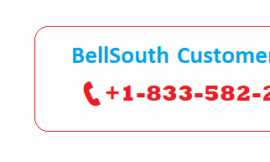Imagine this: you’re scrolling through a website, bombarded by cold product pitches, impersonal taglines, and complex jargon. What do you do? You click away. Now flip the script—what if, instead, you come across a captivating story that mirrors your own challenges, emotions, and aspirations? You’d pause, read, and probably want to find out more. That’s the magic of storytelling—and it’s a powerful way to fuel your inbound marketing funnel.
In today’s competitive digital landscape, the average consumer is inundated with information. But what truly captures their attention isn’t a sales pitch—it’s a story. When you incorporate Inbound Stories into your marketing strategy, you create a deeper emotional connection with your audience, guiding them naturally through the buyer’s journey.
Here’s how you can use storytelling effectively in your inbound funnel to drive traffic, engage leads, and convert them into loyal customers.
Understanding the Inbound Funnel
Before diving into the role storytelling plays, it’s important to understand what the inbound funnel is. The funnel typically consists of three main stages:
- Top of Funnel (TOFU) – Awareness
- Middle of Funnel (MOFU) – Consideration
- Bottom of Funnel (BOFU) – Decision
At each stage, your prospects have different needs and mindsets. Storytelling can help you meet them where they are and guide them further down the funnel without being pushy or salesy.
Why Storytelling Works
Storytelling appeals to the emotional brain. Neuroscience tells us that stories trigger the release of oxytocin, the “trust hormone.” When your content resonates emotionally, your audience is more likely to remember your brand, trust your message, and take action.
Unlike traditional content that lists facts and features, stories humanize your brand. They give your audience a reason to care. Whether it’s a customer success story, a behind-the-scenes look at your company, or a narrative-driven case study, Inbound Stories allow your brand to connect on a deeper level.
Using Storytelling at Each Funnel Stage
1. Top of Funnel: Attract Through Relatable Narratives
At the TOFU stage, your audience may not even know they have a problem. Your goal here is to draw them in with compelling, relatable stories that highlight the challenges they’re facing.
What you can do:
- Share blog posts or videos featuring everyday scenarios your target audience experiences.
- Use anecdotes that frame common pain points in a narrative style.
- Publish social media stories that introduce characters (like a fictional customer) struggling with familiar issues.
Example: Imagine creating a blog titled “From Chaos to Control: How One Freelancer Regained Her Time”. This story paints a vivid picture, aligns with your audience’s experiences, and subtly introduces your solution without directly selling it.
You’re not just telling a story—you’re saying, “Hey, we get you.” That’s when readers will go right here to explore your content further.
2. Middle of Funnel: Educate Through Real Experiences
Once your audience is aware of their problem, they begin exploring solutions. Here, stories should offer valuable insights, proof of your product or service’s effectiveness, and build trust.
What you can do:
- Use customer testimonials as mini case studies.
- Develop eBooks or whitepapers with detailed success stories.
- Create webinars where customers share their journeys.
At this point, your story should shift from “we understand you” to “here’s how we helped someone like you.” By doing this, you’re demonstrating real-world results through Inbound Stories—offering both emotional and logical reasons for the reader to check over here for more information.
Pro Tip: Include metrics in your narratives. For instance, “After implementing our software, Jane’s team saved 12 hours a week and reduced overhead costs by 25%.”
3. Bottom of Funnel: Convert with Transformational Stories
The final stretch. Your audience is on the brink of making a decision. This is where your storytelling should reassure them that they’re making the right choice.
What you can do:
- Use long-form case studies detailing a client’s full transformation.
- Share founder stories to convey values and mission.
- Highlight customer reviews that focus on long-term impact.
You’re not just trying to close a deal—you’re inviting them to become part of a story that already has a proven happy ending. The goal is to make them say, “I want that result too.” When that happens, they’re more likely to find out more about your products and services.
Tips for Crafting Powerful Inbound Stories
To make your storytelling efforts effective, follow these best practices:
- Know your audience. Tailor your stories to resonate with their goals, fears, and language.
- Be authentic. Audiences can sense when a story is forced or fake. Real experiences go a long way.
- Use conflict and resolution. Every good story has tension and a satisfying conclusion. Frame your product as the solution.
- Incorporate visuals. Photos, videos, and infographics can make your stories more engaging.
- Create a content journey. Each story should lead logically to the next stage of the funnel.
Don’t forget to include clear calls to action that invite your audience to take the next step. Whether it’s to check over here for a demo or go right here to download a guide, CTAs embedded in the context of a story feel far more natural than a generic “Buy Now” button.
Final Thoughts
Storytelling isn’t just for authors or filmmakers—it’s for brands like yours. By embedding Inbound Stories across your inbound marketing funnel, you shift from selling to connecting. And when you connect, you convert.
If you’re serious about elevating your inbound strategy, it’s time to put stories at the heart of your content. Your audience isn’t looking for another sales pitch. They’re looking for a narrative that reflects their journey, validates their struggles, and inspires them to take the next step with confidence.
So, go right here—dive into storytelling, and let it transform your funnel from passive content to powerful connection.

![[[USA Telephone]] How do I contact Expedia customer service?](https://bioneerslive.org/wp-content/uploads/2025/05/images-2etoirpE-270x162.jpg)

